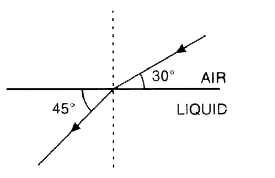(a) Explain the formation of stationary waves on a rod fixed at the middle.
(b) How is the speed of sound in (i) a liquid and (ii) a gas determined using a Kundt's tude.
Step by step video & image solution for (a) Explain the formation of stationary waves on a rod fixed at the middle. (b) How is the speed of sound in (i) a liquid and (ii) a gas determined using a Kundt's tude. by Physics experts to help you in doubts & scoring excellent marks in Class 11 exams.
Topper's Solved these Questions
- BOOK - ICSECHAPTER - WAVESEXERCISE - Short Answer Questions.32videos
WAVES
- BOOK - ICSECHAPTER - WAVESEXERCISE - Superposition Of Waves, Beats, Stationary Waves55videos
WAVES
- BOOK - ICSECHAPTER - WAVESEXERCISE - Conceptual Short Answer Questions With Answers25videos
WAVES
- BOOK - ICSECHAPTER - VECTORS SCALARS ELEMENTARY CALCULUS EXERCISE - UNSOLVED PROBLEMS79videos
VECTORS SCALARS ELEMENTARY CALCULUS
Similar Questions
How will you determine the velocity of sound in a gas using Kundts tube?
View SolutionExplain how the speed of sound can be determined by the method of echo.
View Solution(a) State and explain Newton's formula for the velocity of sound in the medium.
(b) How is modified to find the velocity of soun in gas ?View SolutionA tube closed at one end has a vibrating diaphragm at the other end , which may be assumed to be a displacement node . It is found that when the frequency of the diaphragm is 2000Hz , a stationary wave pattern is set up in which the distance between adjacent nodes is 8cm. When the frequency is gradually reduced , the stationary wave pattern reappears at a frequency of 1600Hz. Calculate
i. the speed of sound in air ,
ii. the distance between adjacent nodes at a frequency of 1600Hz,
iii. the distance between the diaphragm and the closed end ,
iv. the next lower frequencies at which stationary wave patterns will be obtained.View SolutionThe diagram alongside shows the refraction of a ray of light from air to a liquid.
(a) Write the values of (i) angle of incidence, and (ii) angle of refraction.
(b) Use snell's law to find the refractive index of liquid with respect to air.
 View Solution
View Solution(a) Explain with the help of suitable diagram , the two processes which occur during the formations of a p -n junction diode . Hence , define the terms :
(i) depletion region and (ii) potential barrier :
(b) Draw a circuit diagram of a p - n junction diode under forward bias and explain its working .View SolutionDraw a schematic sketch of a cyclotron. Explain briefly how it works and how it is used to accelerate the charge particles.
(i) Show that time period of ions in a cyclotron is Independent of both the speed and radius of circular. Path.
(ii) What is resonance condition gt How is it used to accelerate the charges particles ?View SolutionA railroad train is travelling at 30m/s in still air. The frequency of the note emitted by the node emitted by the locomotive whistle is 500HZ. What is the wavelength of the sound waves : (a) in front of the locomotive?
What is the frequency of the sound heard by a stationary listener (b) behind the locomotive? (c) in front of the locomotive ?
Speed of sound in air 344m/s. (d) behind the locomotive ?View SolutionTwo speakers are driven by the same oscillator with frequency of 200 Hz. They are located 4 m part on a vertical pole. A man walks straight towards the lower speaker in a direction perpendicular to the pole, as shown in figure. (i) How many times will he hear a minimum in sound intensity, and (ii) how far is he from the pole and at these moments ? Take the speed of sound to be 330 m/s, and ignore any sound reflections coming off the ground.
_E01_139_Q01.png) .View Solution
.View SolutionA transverse harmonic wave on a string is described by y(x,t)=3.0sin(36t+0.018x+π/4) where x, y are in cm, t in second. The positive direction of x is from left to right . (i) Is this a travelling or stationary wave ? If travellying, what are the speed and direction of its propagation ? (ii) what are its amplitude and frequency ? (iii) what is the inital phase at the origing ? (iv) What is the least distance between two successive creests in the wave?
View Solution

